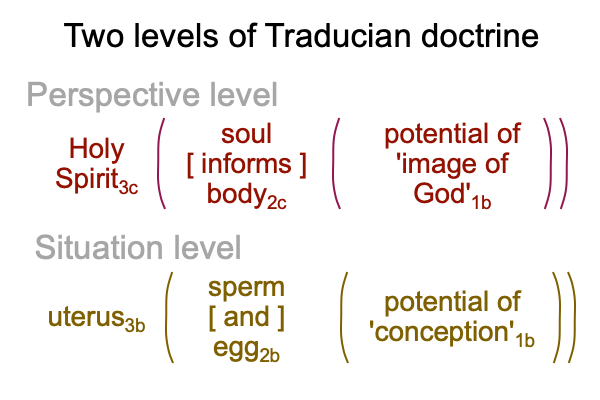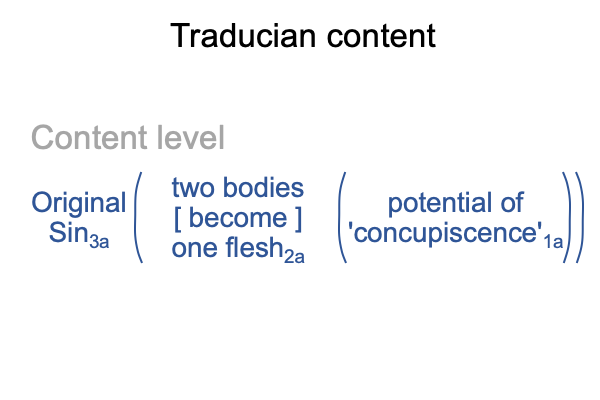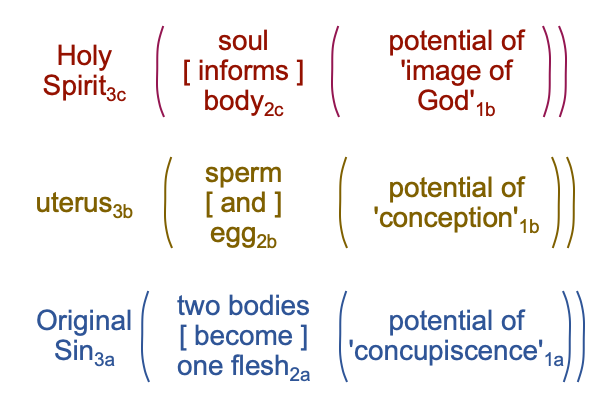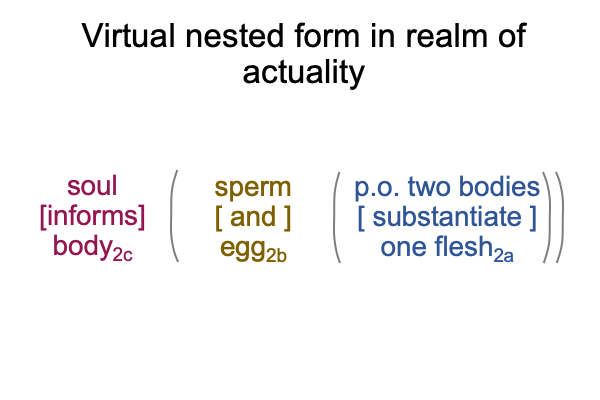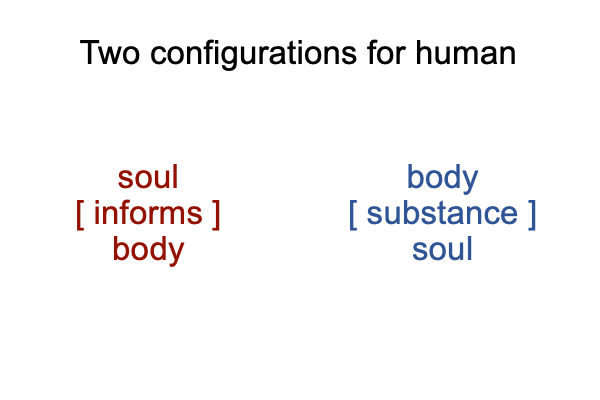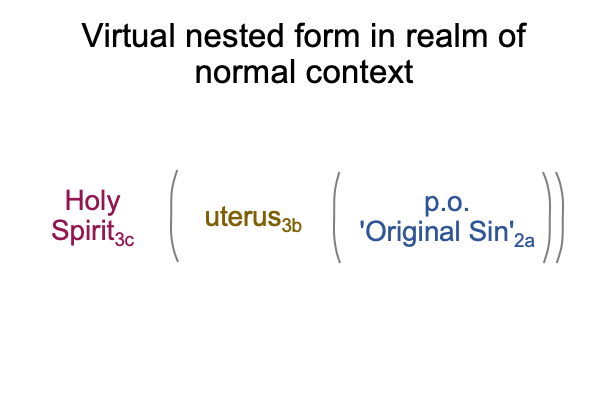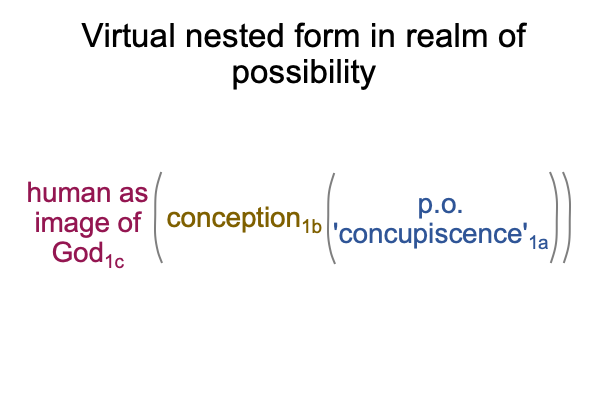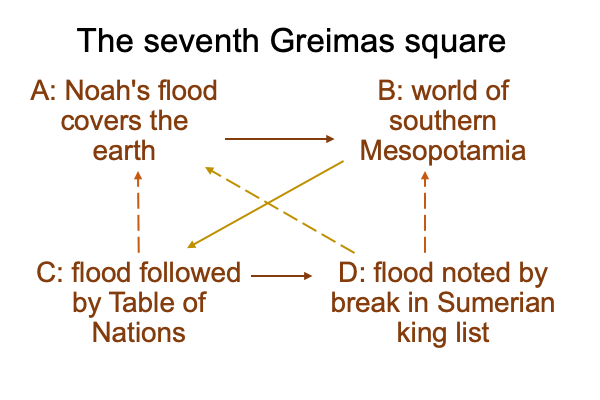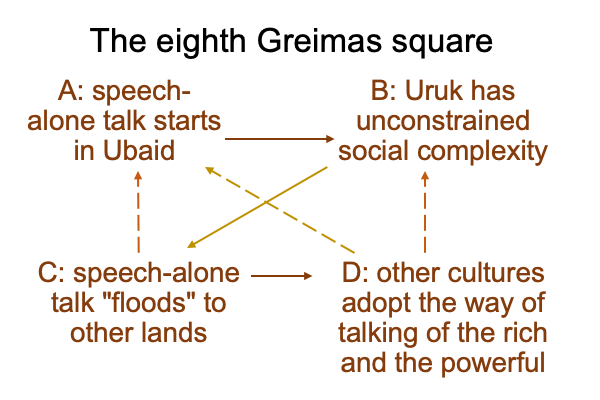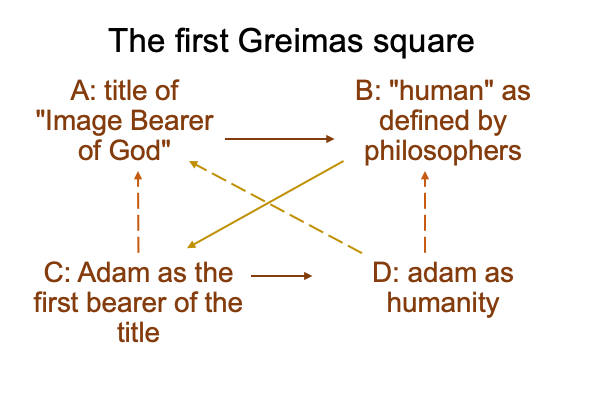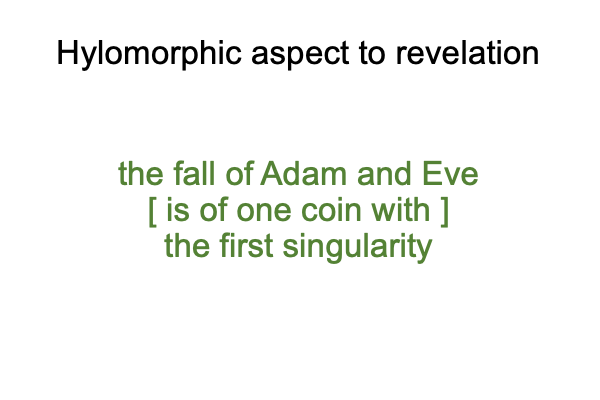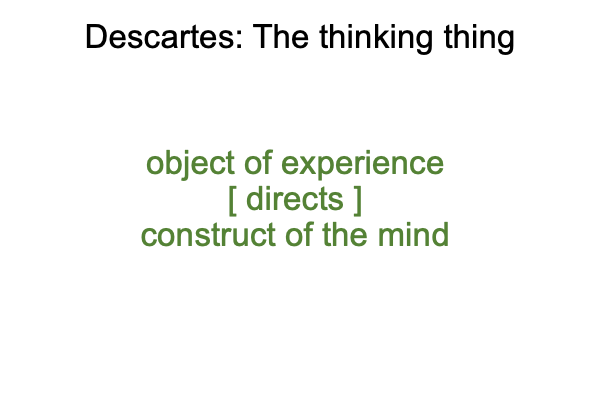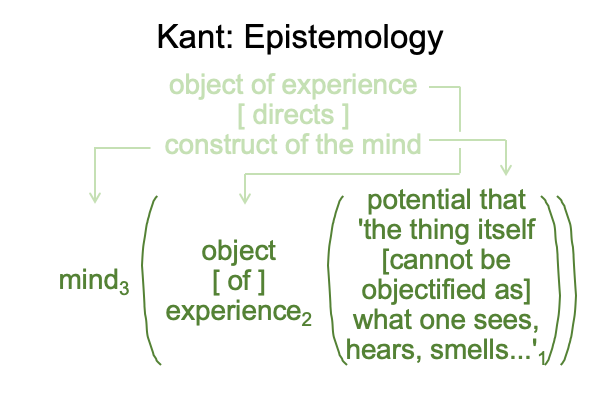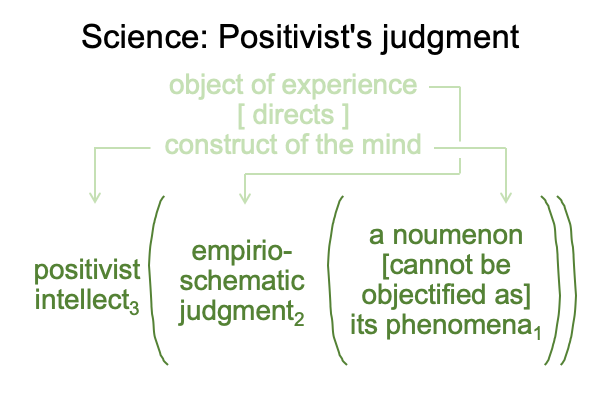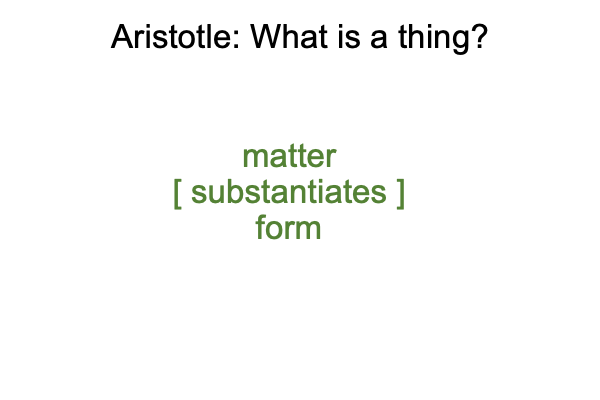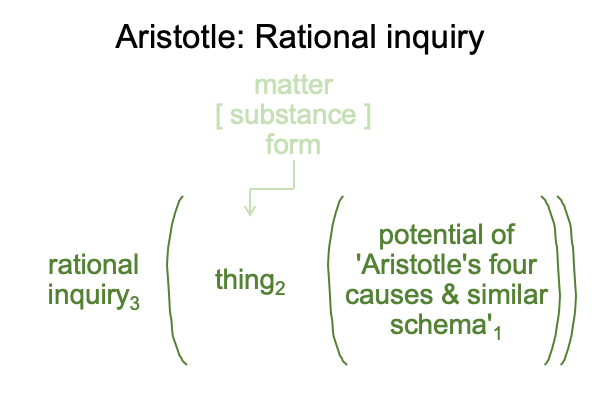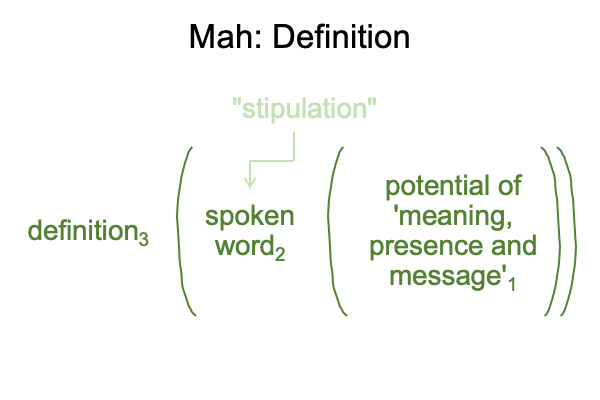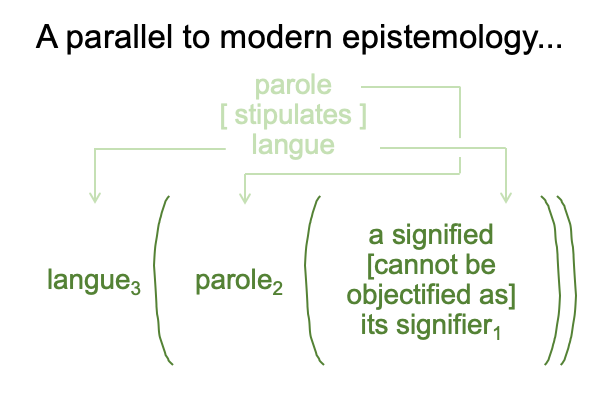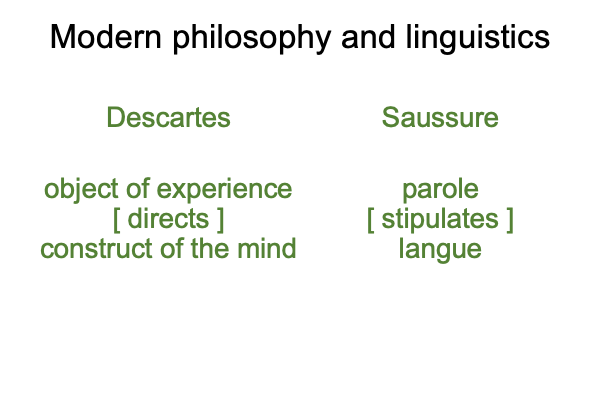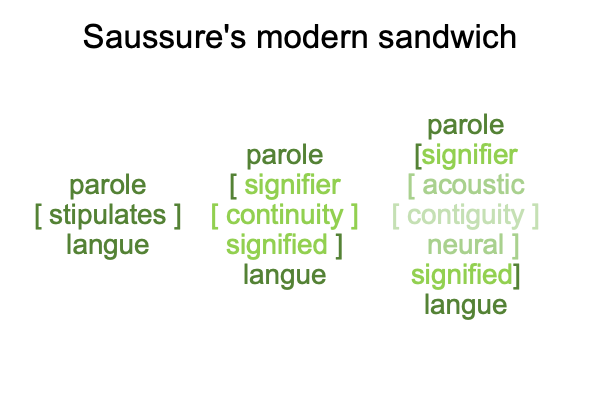Looking at Andrew Ter Ern Loke’s Book (2022) ” The Origin of Humanity and Evolution” (Part 16 of 22)
0135 If the doctrine of Traducianism no longer applies, due to coincidence of the stories of Adam and Eve and the first singularity, what use is it?
It is an excellent example of how we, in our current Lebenswelt, use explicit abstraction in order to construct internally consistent cognitive structures. One could call these structures, langue.
0136 I will use Loke’s discussion of Traducianism in section 5.7 to construct a category-based nested form composed of category-based nested forms. The three-level interscope is developed in A Primer on Sensible and Social Constructionand A Primer on the Category-based Nested Form, by Razie Mah, available at smashwords and other e-book venues.
0137 Here is a picture of the general structure of a category-based nested form.
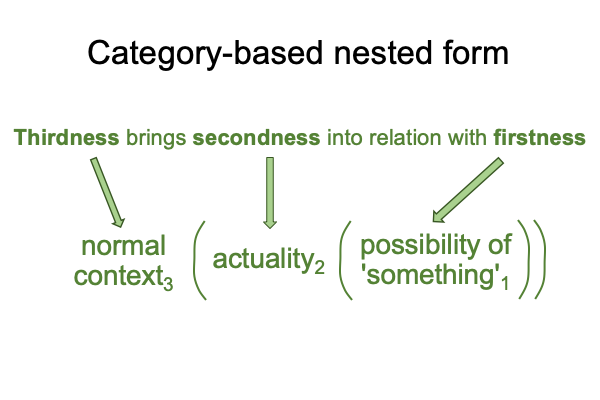
0138 First, if Adam and Eve are the first humans who are labeled, “Image Bearers of God”, then they ought to be the original pair.
Genetic research into human chromosomes detail two DNA-bearing structures specific to male and female. These are the Y chromosome, for males, and mitochondrial DNA, for females. As it turns out, both structures trace back to specific individuals (one male and one female) living hundreds of thousands of years ago. These independent discoveries are described in popularizing articles, with titles such as “The Y-chromosomal Adam” and “The Mitochondrial Eve”.
0139 So, Adam and Eve, the Y-chromosome originator and the mitochondrial-DNA originator, donate the foundational sperm and egg for all humanity. Sperm and egg2 are real elements. They correspond to actuality2 in a category-based nested form.
According to biology, sperm and egg meet in the uterus. The uterus3 corresponds to the normal context3. The potential1concerns conception1.
0140 Here is a picture of the resulting category-based nested form.
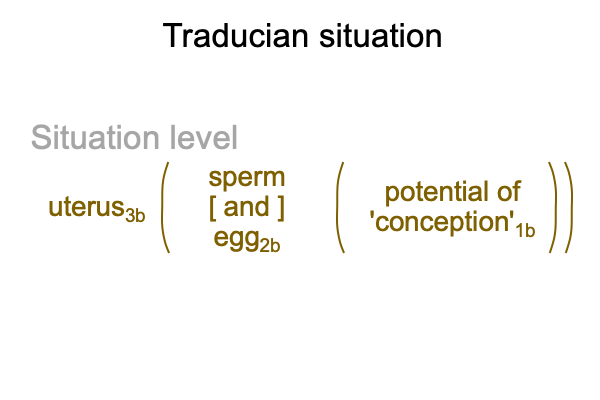
0141 Hmmm. I suppose that a bold and disconcerting portrayal of human biology is built into the Traducian doctrine. Yep, that is the situation alright. Adam goes with the sperm. Eve goes with the egg.
0142 Now, I wonder, “What does this have to do with Loke’s hypothesis that God labels Adam and Eve as Image Bearers of God?“
0143 Well, the Traducian doctrine puts this rather clinical situation into perspective. Theologians start by positing Aristotle’s substance dualism. Another term for this dualism is “hylomorphism”. Hylo is Greek for “matter”. Morphe is Greek for “form”. Aristotle’s hylomorphism is an example of Peirce’s category of secondness. Secondness consists of two contiguous real elements. For nomenclature, I put the contiguity in brackets, as in the following figure.
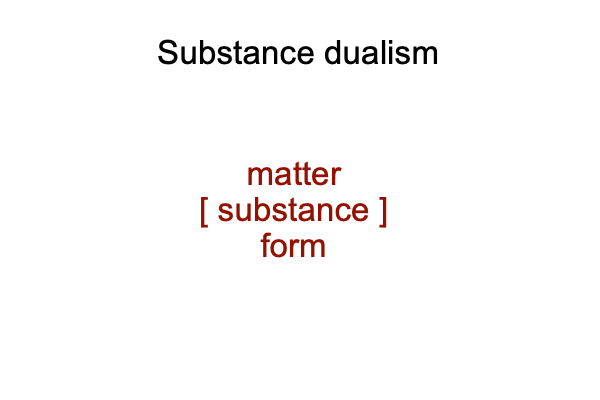
I hope that this looks familiar.
0144 The category of secondness is the realm of actuality.
Next, theologians propose that soul and body correspond to matter and form. The problem is that there are two configurations. In one, the body is like material matter and the immaterial soul is like form. In the other, the soul is like spiritual matter and the body is like material form. In the first, the body gives substance to the soul. In the second, the soul animates the body.
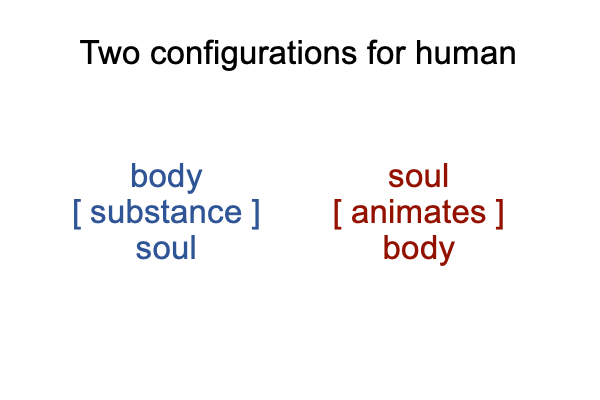
0145 Traducian doctrine puts the biological situation of the human into perspective using the second dyad. The normal context follows the imagery of God breathing into Adam. God brings His fashioned artifact to life. This one living creature bears the stamp of God, “made by God”. In a certain sense, the Father breathes meaning, presence and message into what He has fashioned from the earth. Plus, do not forget that title. Adam is an Image Bearer of God.
Here is a picture of the resulting nested form.
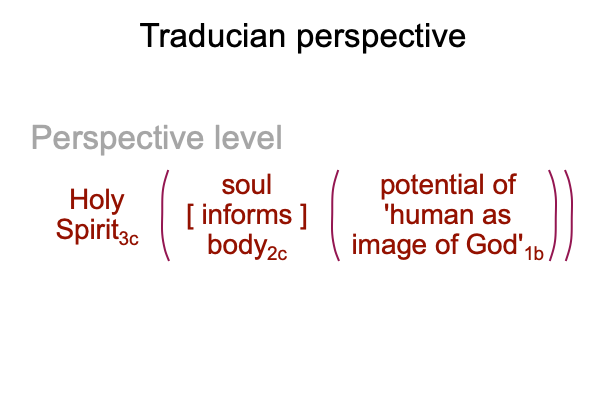
0146 This perspective coheres with the story of the creation of Adam. Replace “soul” with “the breath of God”. Replace “body” with an artifact fashioned from earth.
Indeed, the stories of Adam and Eve present the listener with the actuality2 of God’s breath [animates] Adam, fashioned from the earth. Christian theologians have placed this dyad2c into a perspective-level normal context3c and potential1c in order to understand.

